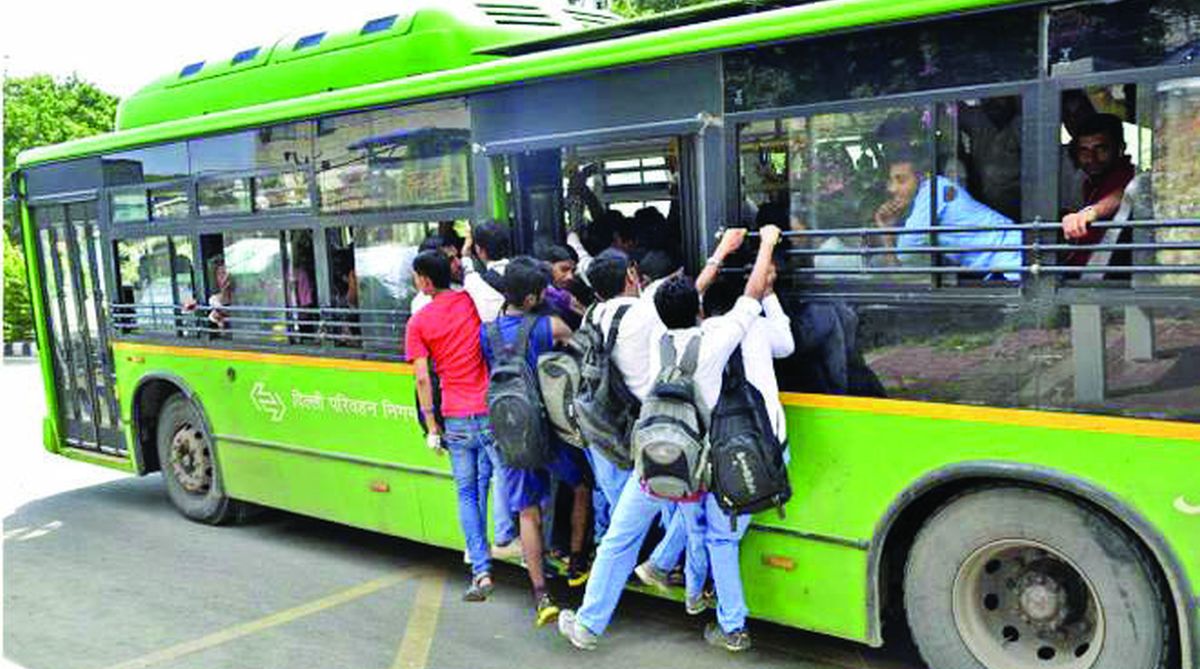106 shuttle buses, 60 more Metro trips to combat air pollution in Delhi
The decision came during a high-level meeting Rai held with the officials on the implementation of GRAP-III restrictions in the city.

(Photo: SNS)
Time was when DTC was the only means of mass public transport and crowded buses were a common sight. Few would today believe that passengers clung to the buses, which were very erratic in their frequency, with barely a toehold on the footboard and holding on to the side bars or the door jamb. Often, due to the sheer weight of the footboard travellers, the bus would drunkenly tilt to one side, putting several lives at risk.
Today, thanks mainly to the Metro and, to an extent, a slightly enhanced fleet of modern low-floor buses, instances of footboard travel are rarely seen. Yet, on certain busy routes, the buses are packed to capacity, though the pneumatic doors manage to contain them inside. However, what has not changed in crowded public transport is the attitude of some men, who do not let go of any chance to lecherously stare at a female co-passenger or surreptitiously touch her.
A colleague narrated how she routinely encountered such boorish male behaviour. She recalled a recent incident, when she boarded a particularly crowded bus. She got barely enough space to stand and prepared herself for a long ride by plugging in her earphones and began listening to music.
Advertisement
Suddenly, she felt a touch on her arm but ignored it thinking it was due to a sudden lurch that the bus had made. Then she felt a hand on her waist, which unnerved her. Turning around, she noticed a man standing too close for comfort. As she glared at him, the man backed off and moved away.
But the incident left her pondering why the buses are crowded even now, despite the Metro taking away a huge chunk of commuters. Maybe some people cannot afford the increased Metro fare. But then the clock in the transport sector appears to have stuck decades back.
Advertisement